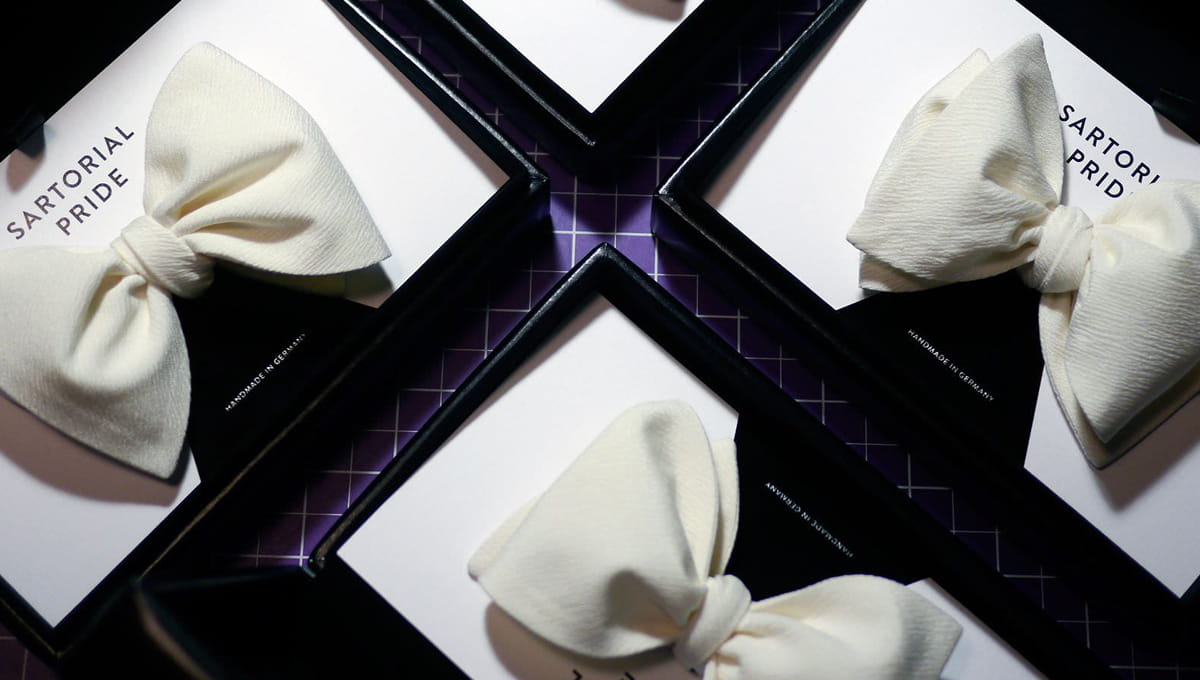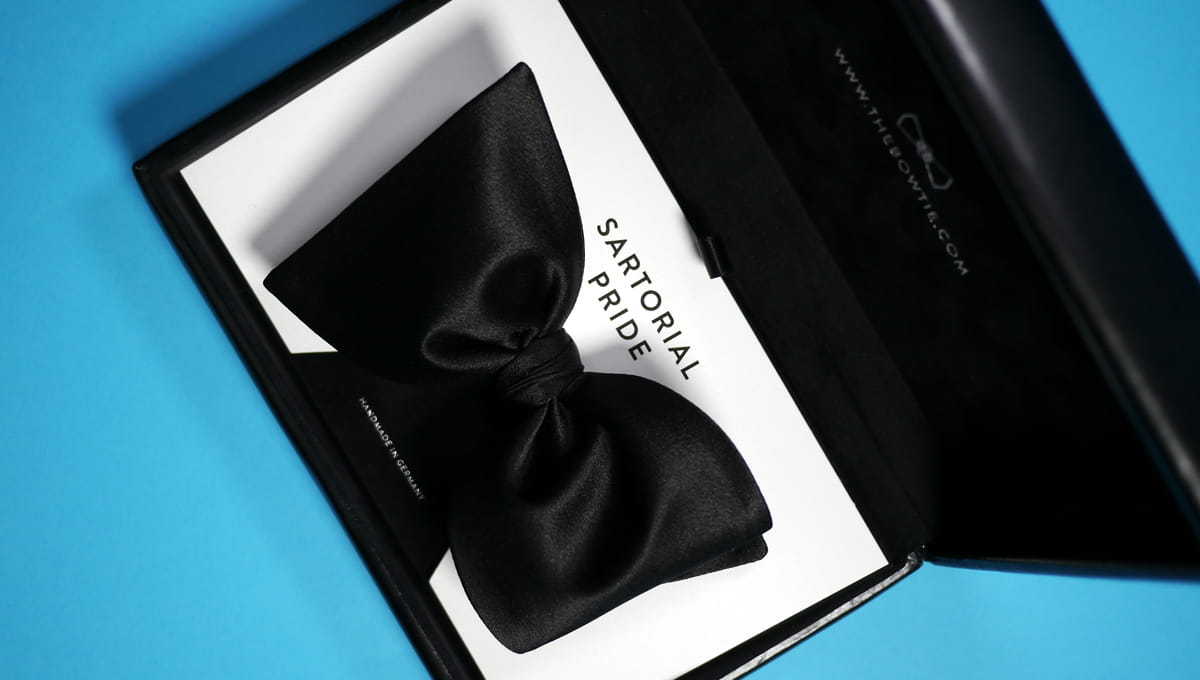Article: White Tie Guide

White Tie Guide
White Tie is the crème de la crème of formal dressing, worn only to the most elegant of affairs and soirees of the highest class. Reserved for functions whose attendees are of the very upper echelon of society, white tie garb is seen at presidential dinners, royal affairs, formal galas and fundraisers, and the most elite of ceremonial events, like the Nobel Prize Award Ceremony.
White tie attire is a rare requirement, especially considering the current prevailing sartorial code that continues to get more and more lax with each and every passing decade. So, if you are one of the lucky few to receive an invitation to a white tie event, you should consider it a prestigious honor and put forth a high sense of decorum so as to display the utmost respect for the given event, fellow attendees and the hosts.
White tie attire has kept its spot as the highest level of sartorial formality since its introduction back in the 18th century by the most revered and famous fashion dandy of the day, Beau Brummel. Brummel’s structured white tie schema remains the same (with very slight variations) to this very day.
Unlike black tie, which can seem a bit ambiguous, dressing in white tie attire is no guessing game – the expectations for white tie events are very straightforward. By using the following list as a guide, you can be sure that you are appropriately dressed for your white tie event from head (to tails) to toe.
Black Tailcoat
The proper dress coat for a white tie look is a black worsted wool tailcoat, although midnight blue has become an appropriate and striking alternative since about the 1920s. It has the cut of a double-breasted jacket that reaches to the waist in front and has two long symmetrical “tails” in back that reach to the bend of the knee. The peaked lapels are covered with an accent fabric of either silk, satin or grosgrain, and the far-apart buttons (typically six and covered in the same fabric as the lapels) are sewn in such a way so that the coat cannot be closed.
White Waistcoat
A white cotton pique vest, also called a waistcoat, must be worn underneath the tailcoat but on top of the shirt, and it must be long enough to cover your waist. There should be absolutely no sign of the top of your trousers or suspenders. The vest should be made of white cotton pique and it should have three buttons (preferably mother-of-pearl) all of which should be fastened when worn. The waistcoat is connected to the trousers with a tab and it is extremely important to note that this tab should never be exposed. Also, the waistcoat should not extend below the tailcoats front panels – there should be no break between the black of the tailcoat panels and the black of the trousers.
White Shirt
Your shirt should be made of white cotton with a front bib-like component made of a stiff, white cotton pique. The shirt should have single cuffs that close with cufflinks of silver, gold, mother-of-pearl, or diamond, matching the exchangeable fastening studs that replace conventional front buttons. Just as in the case of the waistcoat, the shirt is connected to the trousers with a tab to prevent it from bulging when sitting, and this tab should never be exposed. The shirt must have a stiff wing tip collar, usually comprised of a cotton pique, with the tips sitting behind the bow tie. The typical shirt cuff exposure rule of showing 0.25″ – 0.5″ underneath the coat sleeves applies for white tie, but you also have the option of showing a bit more with this formal ensemble because the collar is higher, so more shirt cuff exposure balances out the black-and-white proportions.
Suspenders
Button-fastened (not clip) suspenders are a must; they are worn over the shirt but under the vest/waistcoat. The suspenders are never seen, so their colour is inconsequential.
Trousers
Fishtail trousers in a matching fabric to the tailcoat are required for white tie. These specialty trousers sit on the waist, the back being higher than the front, and have a split with buttons on the inside of the front and back in order to fasten the suspenders. They should fall to exactly the heel of your shoe, be void of cuffs and have a double stripe down the outside of both legs in the same accent fabric as the facing of the jacket lapels.
Shoes
Only a few footwear options are appropriate for white tie:
- Black patent leather opera pumps, with a bow
- Plain black patent leather oxfords
- Black derbies
Socks
Socks should be knee-high, made of black silk.
White Bow Tie
A white bow tie is a must, and it is essential that it be of the self-tie variety (no pre-tied or clip ons!). Traditionally, the tie and vest match in fabric, however this rule has fallen out of contemporary sartorial law, allowing freedom to don a more expressive tie. Feel free to explore your options and give your bow a personal touch – as long as it is white, it is fair game.
Go Above and Beyond
Even though the sartorial standards are rather rigid for white tie attire, this does not mean you are not afforded the ability to set your self apart from the crowd. There are ways to stand out by opting to don accessories outside of what is expected but are still within the realm of acceptable. These accessories are limited to:
- Pocket watch – silver, platinum or gold. Must be attached to the waistcoat.
- Top hat – black silk with a black grosgrain band running around the bottom of the brim.
- Boutonniere – must be white, and best not worn in conjunction with a pocket square. Carnations and gardenias are preferable.
- Pocket square – must be white, linen is normative.
- Gloves – White, made of a very fine leather.
- Scarf – white or ivory, in either a fine silk or cashmere. Worn loosely, hanging down over each shoulder.
- Opera cloak or cape – usually worn in conjunction with a top hat.
- Cane – black.
